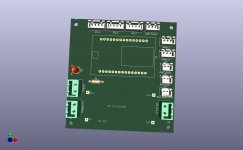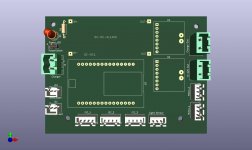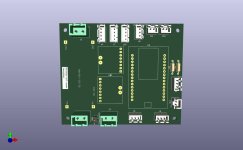I've started designing a PCB for the perimeter transmitter, unfortunately I haven't been able to find a template for the INA3321 yet, which is kind of dumb.
Maybe I will find one.
The motor driver would also have to be wired separately if you use the L298H.
But maybe an optocoupler instead of a motor driver would work?
Maybe I will find one.
The motor driver would also have to be wired separately if you use the L298H.
But maybe an optocoupler instead of a motor driver would work?



